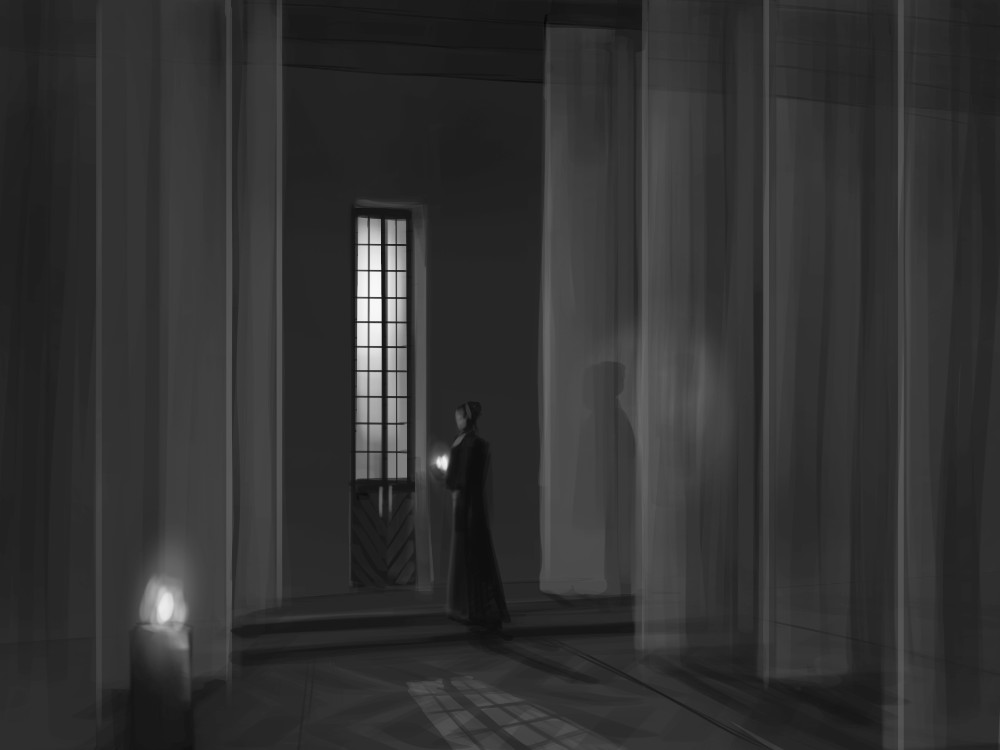
In Below the Line‘s earlier review, posted in conjunction with the 59th New York Film Festival, we noted that Joel Coen’s upcoming film The Tragedy of Macbeth is both an acting showcase and a technical marvel. Mary Zophres‘s costumes stand out for being so distinctive without being tethered to any particular time. The film is supposed to be set in a 14th Century castle or, in several, to be more precise. But Coen wanted to give the film a distinctive look that ends up enrapturing most of the picture: tall, large open spaces with seeming little design but lots to say.
Last month, Below The Line spoke to the picture’s Production Designer, Stefan Dechant, most famous for being the ADG award-winning art director for Avatar, about creating the sets that frame Coen’s passion project. Read on to find out how he tackled the ambitious project, for which both Coen and cinematographer Bruno Delbonnel had many ideas, to begin with.
Below The Line: How did you get to The Tragedy of Macbeth and where did the idea for this grand, minimalist come about?
Stefan Dechant: The project came out of the blue. Joel’s producer gave me a call on a Saturday and the script and then said Joel wants to meet with you tomorrow [laughter]. I said: “Ok, cool.” The script was amazing, but I had to reorient myself with Macbeth, so it took me a while to get through it, to make sure I knew was the language was. Joel was: “Look, it’s not what you think it is. It’s not a castle. It’s the idea of a castle.” He really had a vision for the show—it was not like the production designer came in and said: “Hey, I have an idea, German Expressionism.” Joel had been collecting imagery for a year, in partnership with Bruno. He had a lot of ideas. This is the inside. This is the crossroads. It was a collage of places, some from movies, some from the real world. He showed me pictures of an architectural masterpiece in Mexico City, Casa Luis Barragan. It’s really just a square tower with two very black walls. That grounded me. Then you incorporated imagery like from F.W. Murnau’s Sunrise. We were looking at Night of a Hunter, and images from The Passion of Joan of Arc. From all that, you could see the blueprint of what was to come.
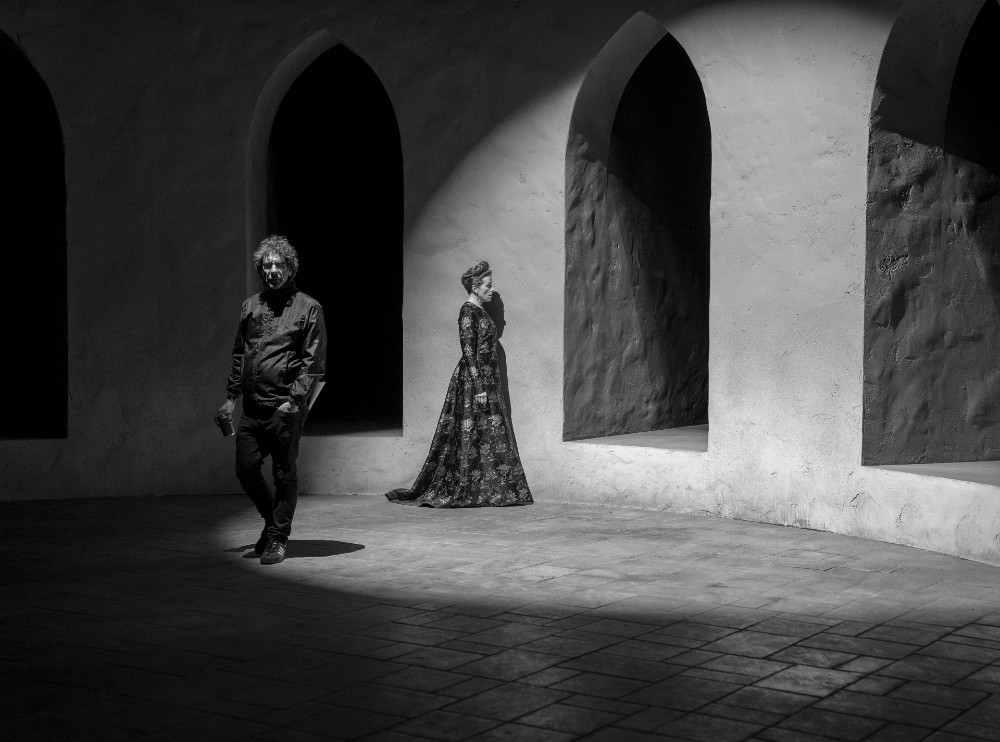
BTL: What was he trying to convey for the look of the film overall?
Dechant: It was to be academy ratio, black and white. The reason for this was that he did not want to ignore that the text was a theatrical experience. He never wanted to make a naturalistic version of Macbeth, but not filmed theater either, shooting against tableaus. It needed to be theatrical but cinematic. To do that, we needed to bring a level of abstraction. Black and white help you control that immediately. And he wanted us to carve some of the pieces with shadow and light in them. That first meeting was about two hours going over these influences and talking about the history of it.
What we did is for a week after that, I would come over to his and Frances’ place in the evenings going through the script, and he could lay out the choreography of how things were going to happen. We could say, “Oh yeah this is where Denzel is going to start, and this is the courtyard, and here it switches to night, and the colonnade is here.” Once we saw it all laid out with the pictures and the text, that’s when we started creating imagery to reflect his movie back at him. And we only had ten weeks to do it.
BTL: Is it harder or easier for your when you come into the project and the director has that many ideas?
Dechant: It’s a joy. I keep going to the Beatles as references. I’d be like Billy Preston walking in and being like: “What are you guys doing?” And then, they ask you to play with them. You don’t need to reference the Beatles. Joel and Bruno are brilliant. You are having a dialogue with the artists and then you’re creating art together. Most directors I work with have a very strong view of what they want a movie to look like, but these two actually had been working on it for a very long time. Going in as a collaborator with cinephiles is just amazing.
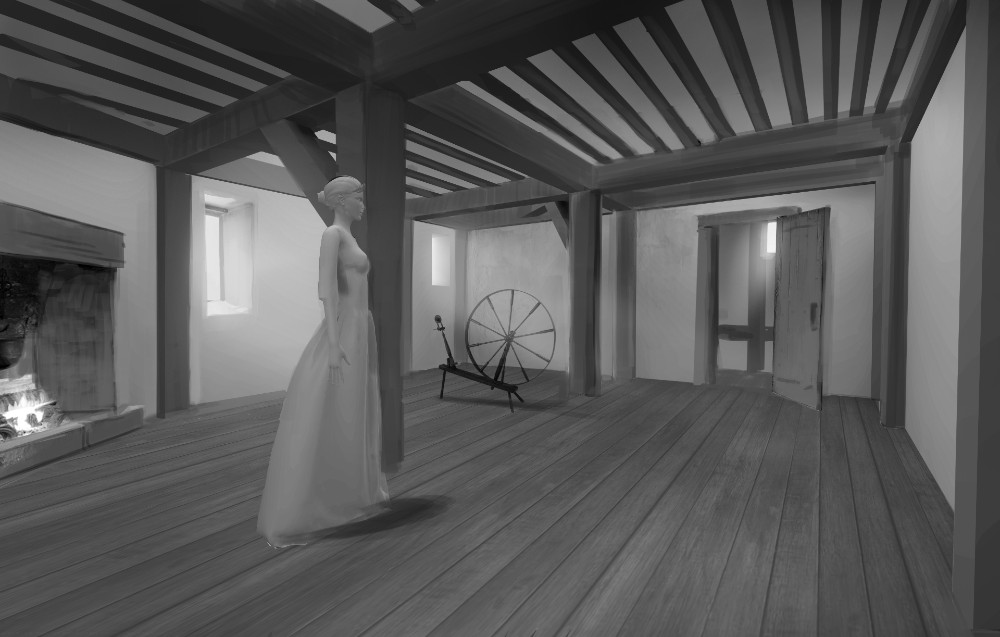
BTL: So how did you build the sets from there? How much of what we saw was constructed and how much was a set you found somewhere?
Dechant: I explained to Joel that what I thought would work the most would be to render the designs in 3D, digitally. That way he and Bruno could look and critique and see what it would be like. 3D is the way to go. And it’s all constructed. We wanted control over everything. It’s all built. The only elements that are in there as elements are horses coming over the ridge. And the final scene is on a ranch in Southern California. Everything else we developed.
BTL: How did the black and white play into how you created the sets?
Dechant: This was tricky. It was the first black and white I had done. I relied heavily on Bruno. The sets are very much carved out of light and shadow. At every step of the design process, we spoke. And he could draw and paint on photoshop, so that worked. I also had Mary nearby and seeing what she was doing and seeing her tests with the costumes and textures, and I could say: “Oh you know that’s really smart, let’s see if you can get some texture to match.” The thing is you can get away with a lot in black and white, so that was cool, and we actually painted the shadows into the sets. Almost all of them have shadows or gradations up and down, all the way to the ceiling.
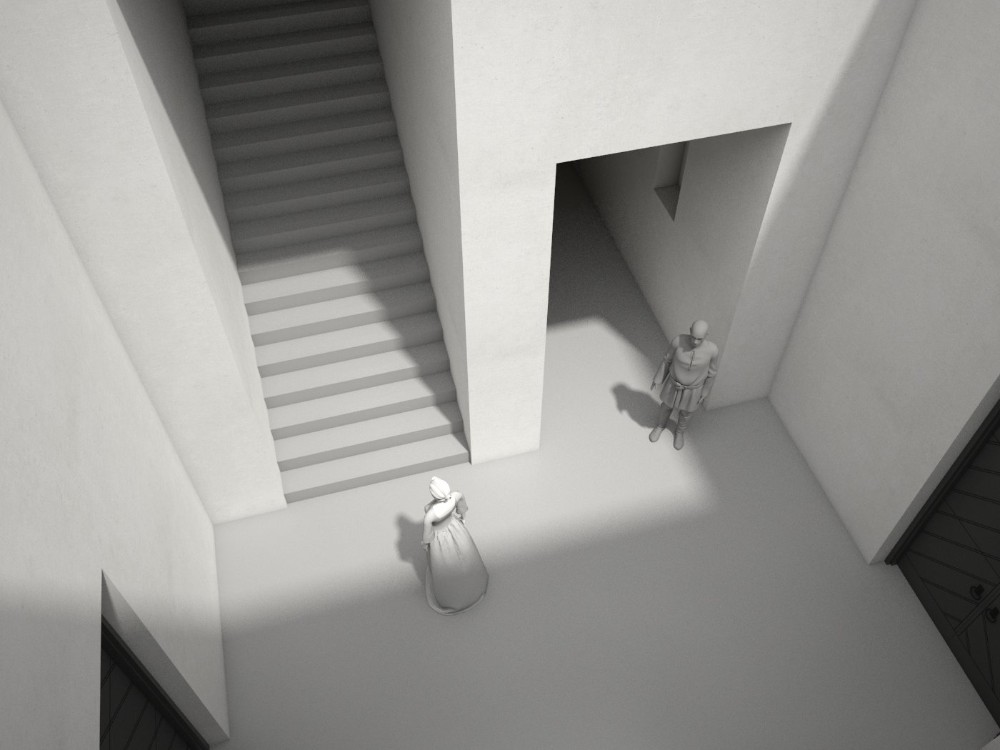
BTL: What are we looking at in terms of size? 30 feet?
Dechant: Oh yeah, they were big sets. There’s a matte painting in the Inverness courtyard that we were going for. We used Stage 16 in Warner Bros. for the crossroads, to have a field, etc. After we shot that, we broke it out and had all our stairway sets together and Macduff’s tower. We had built that one in section and stood them up the following week—we had to move quickly. Essentially, we built things in sections, and then put them together for the first time for shooting, which is a bit scary. Some of them are 16 feet, some 50. And now it’s 50 feet in the air and we had to hit it again, retouch it. That really was frightening. It’s all part of the process.
BTL: What was the hardest set, and why? Or which was your favorite?
Dechant: I really liked the crossroads, because it is simple. I love artifice. I love the film work of Arnold Pressburger and guys like that. I like the artificial theatrical look. I loved how it was shot and lit. Overall, it was beautiful. I also really like the apparition room, where the witches are in the ceiling. The hardest was Burnam Woods because five days before that was a beach. We had to push the sands off to the side. We had to put burlap over the sand, dirt on that, bring the trees in. That was a fast changeover.
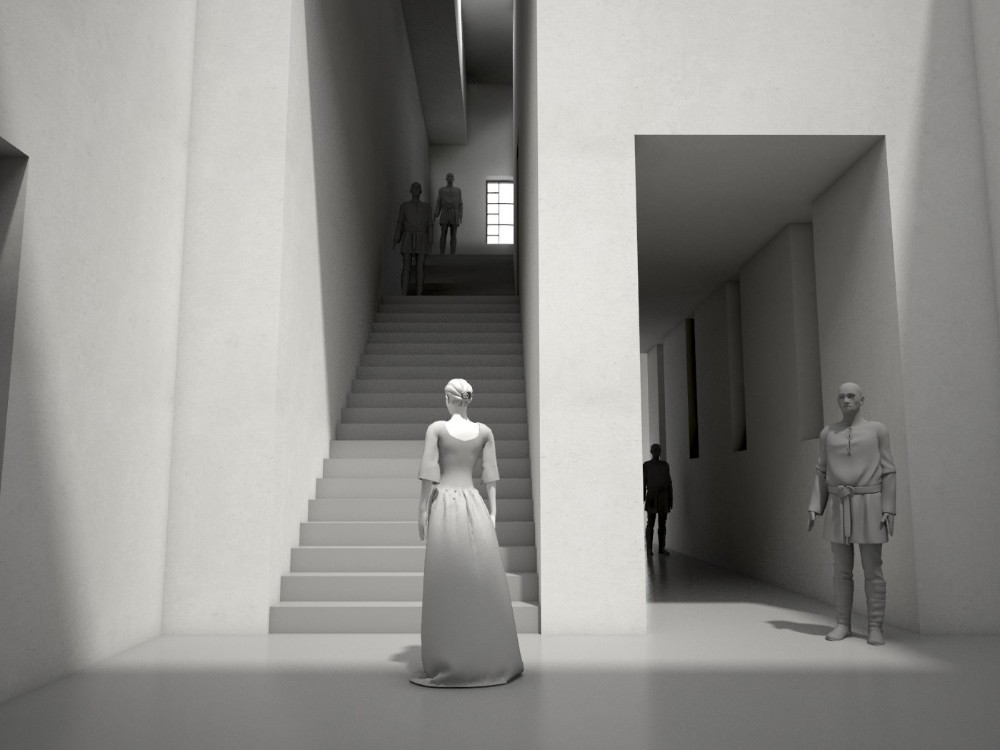
BTL: What does being in the awards chatter feel like?
Dechant: I try to ignore it because I don’t want someone else to define me but of course, I’d be lying if I didn’t say it’s nice and fun…I’m not crazy! But the joy of making a film is the best part. Nothing beats being with those people I was collaborating with my crew, the art department, Joel, and Bruno. Being in the company of Mary Zophres, it’s my go-to standup routine to say I’m Billy Preston, but it really was coming in with a group of people that are brilliant and that is my joy. My film school was the Criterion Laserdisc and they put the film on it, and that made me very happy.
The Tragedy of Macbeth will be released in select cities on Christmas Day, following its premiere at the 59th New York Film Festival.
You can read J. Don Birnam’s earlier review, and our interview with Composer Carter Burwell, who was just shortlisted at the Oscars for his Original Score.
Film images courtesy A24 and Apple, sketches and renders courtesy Mr. Dechant. Click on images for larger versions.





